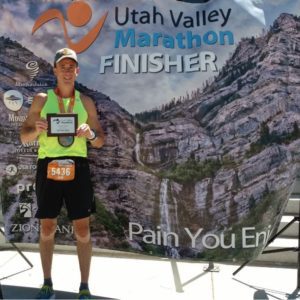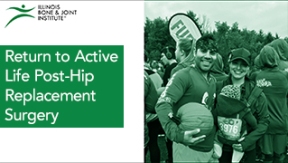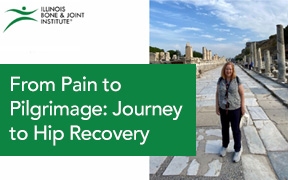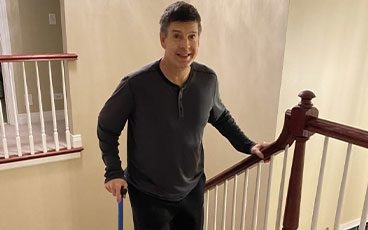I am a competitive amateur marathon runner who had completed 21 marathons prior to my injury. I began having muscle pain in my stomach and groin area and I thought it was just a pulled muscle. The pain was manageable with naproxen but it progressively got worse, so I went to my GP. He thought it may be a hernia so he sent me to a surgeon. The surgeon promptly told me I did not have a hernia, but just a muscle strain and prescribed physical therapy for six weeks. The pain got a little better so I just kept running and taking naproxen. After the pain got worse with more weekly mileage, I returned to the surgeon who told me that I still did not have a hernia. The insurance company finally agreed to pay for an MRI that revealed I had torn cartilage in my right hip due to a natural impingement I was born with but did not manage to affect me until I was 48 years old.
Get the ultimate guide to hip pain relief →
I then saw an orthopedic surgeon out of a practice through a major Chicago hospital (many of whom are team doctors to local Chicago sports teams). He told me that he could repair the tear but that I could never run again and if I tried I would be facing full hip replacement surgery in a year or less. I was devastated by this news but thought it would be prudent to get a second opinion. I saw Dr. Shah and he told me that my MRI revealed that I did still have a significant amount of healthy cartilage left and that he felt I had a 90% chance of returning to running. I did some follow-up homework on Dr. Shah with a friend of mine who is a radiologist and he said he had heard good things about him from peers and his patient success rates for my type of procedure were excellent, so I scheduled my surgery with him.

Jack winning the 2018 Utah Valley Marathon for his age group.
Following the surgery, Dr. Shah told me that it had been a successful hip scope and that I had 70% of my cartilage left — more than enough to resume running. I patiently went through the slow process of physical therapy including three weeks on the passive motion machine for four hours a day, always wearing the hip brace, riding an upright bike three days after surgery, walking on crutches for six weeks, using an elliptical trainer after seven weeks and not running until three months. I was able to start running a few miles a day at first after three months and by four months post-op I was up to 40 miles per week. Six months out from surgery in the summer I ran one of my fastest 10k races in several years.
Then into my fall marathon training my left hip had the same impingement and I tore the cartilage in that one. This time I did not have to go through unnecessary physical therapy and was able to schedule the surgery immediately. I went through the exact same rehab protocol and was running again at full speed in four months. Because I caught the injury sooner, Dr. Shah reported that I had 90% healthy cartilage in this hip. Seven months after surgery I was peaking at 70 miles per week in the early spring and went on to run my first marathon in over two years. I won my age group and had no pain whatsoever in either of my hips. I ran another marathon in the fall and also won my age group and have been running pain-free since. Just last week I was in Arizona and had three separate long hikes in challenging locations like the Grand Canyon and was able to stay in step with my 20-year-old daughter.
I know that there are doctors out there that are not as experienced in reattaching torn cartilage to people's hips and it saddens me to think that there are a lot of runners and other athletes out there with unnecessary total hip replacements that will never have their full active lifestyle back. Obviously everyone's conditions and injuries are different so their outcomes may be worse than mine but just make sure you ask your prospective physician not only how many of these types of procedures they do a month but, more importantly, what their patients outcomes are post-op. Then ask to speak to patients they have worked on who have been able to resume their sport to see how things went for them.
I cannot thank Dr. Shah enough for his expertise and counsel. He even recommended that I start taking yoga to make my tight runner's body more flexible and that in turn has helped me with some back pain I had been experiencing. I now have running back in my life and could not be happier. I am not running as fast as I did when I was 35 but I am still very competitive for my age and get to do what I love — running with my own hips and participating in any physical activity I desire.





